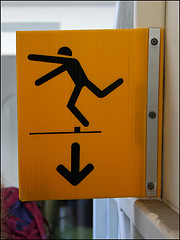The term “premises liability” refers to the area of the law dealing with personal injury occurring on someone else’s property.
Property owners have certain legal obligations to those individuals who come onto their property. These obligations generally include keeping the premises safe.
When these obligations are not met, and personal injury results, the property owner may be held liable for those injuries. Although “slip and falls” are very common types of premises liability cases, there are many other types of injuries and claims that arise as a part of premises liability.
General categories of premises liability cases
There are generally four major categories of premises liability cases: slip and falls, inadequate maintenance, defective conditions, and inadequate security. In most cases, the property owner will be held responsible for injuries caused by any of these conditions occurring on their property. However, determining who is liable is not always clear. In some cases, such as when commercial property is being leased to a business tenant, the property owner does not actually control the property. The same is true with rental property. It may be that the responsibility will be shared by the landlord and the tenant. Missouri has its own landlord tenant laws, as does Arkansas statutes.
Slip and fall claims
A common example of a slip and fall is when a supermarket neglects to clean up a spill on the floor, and a customer slips on the spill and falls. Slip and fall cases can result in serious injuries, such as knee and hip injuries or fractures. Even head injuries are not uncommon. In most slip and fall cases, an important issue is whether the premises owner took any precautions to prevent injuries, like putting down mats or “wet floor” signs.
Inadequate Maintenance
If a landowner fails to perform routine maintenance of the premises, in order to avoid injury to visitors, and injury occurs, there may be liability. A common example could be a tree branch falling from a tree and injuring a bystander. Other common examples are broken sidewalks or tree roots that cause people to trip and fall. The resulting injuries can include torn ligaments, requiring arthroscopic surgery, and possibly nerve damage.
Defective Conditions
Once a store owner becomes aware of some dangerous condition on the premises, such as a damaged staircase or broken display cabinet, the owner has a duty to repair the dangerous condition or adequately warn customers of the danger. If the dangerous condition is actually created by the store owner, then the duty to repair or warn is even higher.
Inadequate Security
There have been many cases where, for instance, a parking structure company fails to install adequate lighting or warn patrons about dangerous criminal activity known to take place on the premises. As a result, patrons are injured or killed through violence of a third-party. Similarly, lack of building security, especially in areas with high criminal activity, can lead to liability if a patron is hurt on the premises during criminal activity.
If you have questions regarding premises liability, or any other personal injury concerns, call the Cottrell Law Office at (888) 433-4861.



